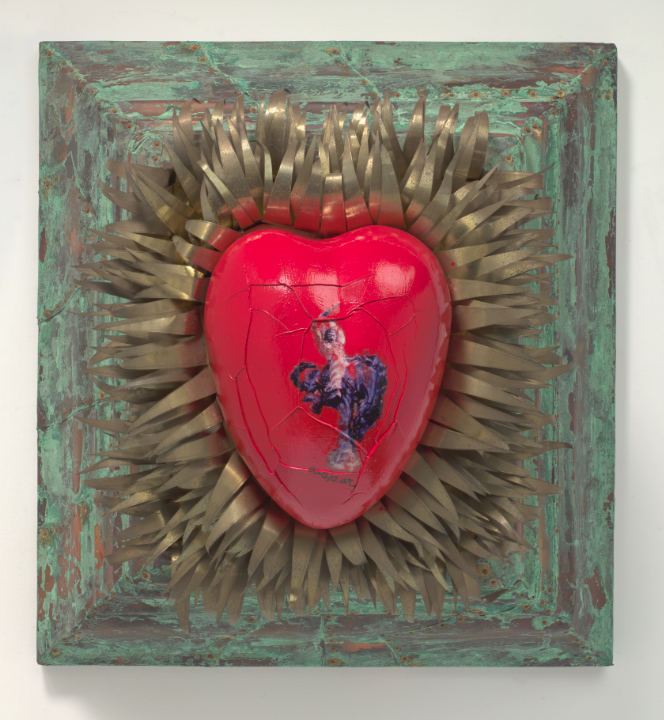This artwork inevitably transports me to El Paso, the birthplace of Jiménez and Enríquez. The cobalt background, Jiménez’s orange t-shirt and angled torso, his wrinkled beige flesh, and the sunlit hat evoke the deep-blue skies, the ochre lowlands, and jagged mountains of this singular place. In 2014 I visited this westernmost city of Texas that borders the State of New Mexico to the North and West, and to the South Mexico’s Ciudad Juárez, state of Chihuahua. As my colleague and I drove to San Elizario to visit with Gaspar, my cellphone broke into fits, jumping between international service and its normal network.
On our way, the sight of the fence and the trench of the Río Grande that separate the US-Mexico border, the reservation of the indigenous community Ysleta Pueblo del Sur, and the confusing vision of buildings and monuments on either one country forming one skyline, made for a strong impression. It deepened as we arrived at Enríquez’s home, an adobe structure gracing the arid landscape like a giant white dove. These buildings, with their soft edges and slightly rough walls, are typical of the region. Enríquez’s house dates back to the mid-1700s when San Elizario was one of the most remote outposts of the Viceroyalty of New Spain. The town became part of the Republic of Mexico in 1821, and then of the slave-holding Republic of Texas in 1836. It was annexed by the United States annexed in 1845. By virtue of this last political transition, San Elizario became one of the oldest villages of the United States, tracing back its roots to the late sixteenth century. Concurrently, the Spanish, Mexican, Apache, Comanche, and Pueblo communities native to the Southwest (among others) became part of our cultural substrate.
Frontiers might be solid on a map, but connections on either side of the border run deep in this part of the country, where Gaspar once crossed the bridge to Mexico to visit his grandparents on local buses that went back and forth. As artists, the late Jiménez and Enríquez pay homage to this region, its history, people, and folklore. Enríquez does so through his choice to extensively portray his self-possessed Mexican American students and close friends. Jiménez, did so through his positioning of Tejano culture as integral to the United States, like in Vaquero, which asserts the Hispanic origin of the quintessentially-American cowboy.
Gaspar Enríquez’s Luis Jiménez, El Corazón de Luis refuses to be only one thing. It is work on paper, a sculpture, a color study, a landscape, a portrait, and a symbol of the shared heritage of Jiménez and Enríquez and its central place in their art.

